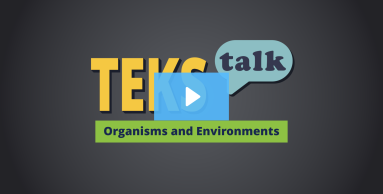- Science
- Grade 4
- Organisms and environments
Back to TEKS search
Science.4.12.A
The student is expected to
investigate and explain how most producers can make their own food using sunlight, water, and carbon dioxide through the cycling of matter;

Knowledge and Skills Statement
Organisms and environments. The student describes patterns, cycles, systems, and relationships within environments.
Supporting Information
Research
George, Robert. “Science 101:How do plants make their own food?” Science and Children 40, no. 6 (March 2003): 17–17. http://www.jstor.org/stable/43171975.
Summary: This informative article explains the science behind the process of photosynthesis and why this process is important to all organisms on Earth. It also explains how some plants supplement their diet by trapping and ingesting insects.
